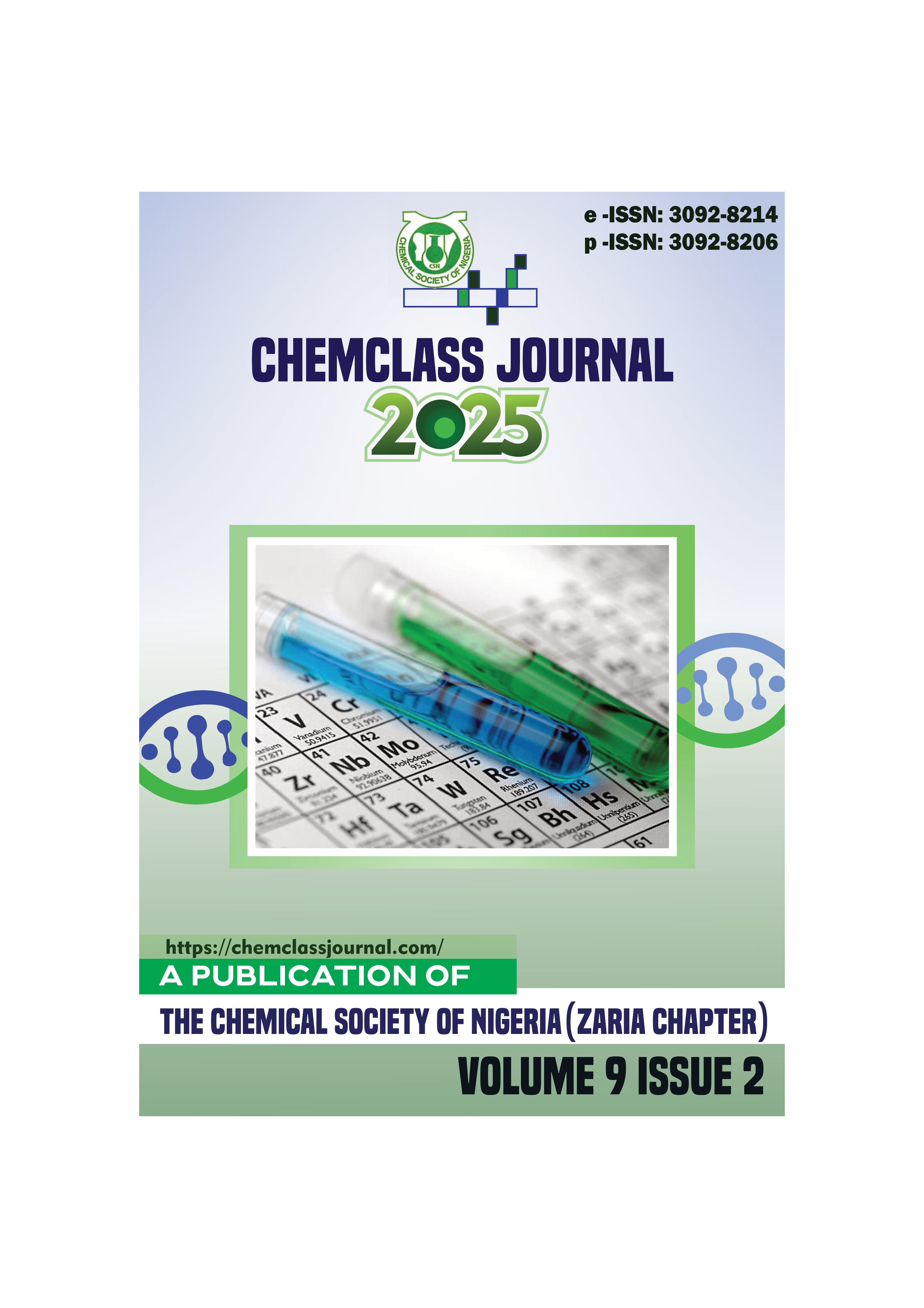Synthesis, Characterization, and Antimicrobial Evaluation of Co (II) and Zn (II) Complexes with Schiff Base Derived from Pyrrole-2-carboxaldehyde and Thiosemicarbazide
DOI:
https://doi.org/10.33003/chemclas-2025-0901/138Keywords:
antimicrobial activity , complexation , pyrrole-2-carboxaldehyde , Schiff base , synthesis , thiosemicarbazideAbstract
A novel Schiff base ligand was synthesized from the condensation of substituted thiosemicarbazide and
1H- 1H-pyrrole-2-carboxaldehyde. The corresponding Co(II) and Zn(II) complexes were obtained by
refluxing the chloride of the metals with the prepared Schiff base in an ethanolic solution. The Schiff base
and its complexes were characterized and analyzed using Fourier Transform Infrared (FT-IR), UV-visible,
magnetic susceptibility, conductivity measurement, melting point/decomposition temperature, and
solubility test. The Infrared spectral data of the Schiff base showed an absorption band at 1585 cm-1,
attributed to ν(C=N) stretching. However, this band was shifted to a higher frequency of 1592 cm-1 and
1601 cm-1 indicating the formation of a Co-N and Zn-N band in the complexes respectively. The UV
Visible studies revealed significant red shifts in the characteristics C=N and C=S bands upon complexation
confirming strong ligand-metal coordination. The complexes exhibited enhanced thermal stability (with
decomposition temperatures of 221°C and 210°C for the respective complexes. Magnetic measurements
indicated a high-spin octahedral geometry for the Co(II) complex (µ-eff =4.56B.M) while Zn(II) complex
is diamagnetic with a characteristic tetrahedral geometry. The molar conductance value of the Co(II)
complex was observed at 24.8 ohm-1 cm2 mol-1 while that of the Zn (II) complex was observed at 3.06 ohm-1
cm2 mol-1 suggesting non-electrolytic nature of the complexes. The Schiff base and the complexes were
screened for antimicrobial activity against Staphylococcus aureus, Escherichia coli, Pseudomonas
aeruginosa (Bacterial strains), Candida albicans, Tinea capitis and Tinea pedis (fungal strains with
Ciprofloxacin and Ketoconazole serving as control drugs for bacteria and fungi, respectively. The results
demonstrated that metal complexation significantly enhances bioactivity relative to the free ligand, although
their activity was lower than that of the standards.





 ChemClass Journal
ChemClass Journal
